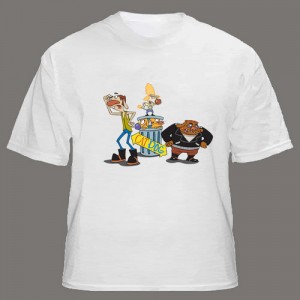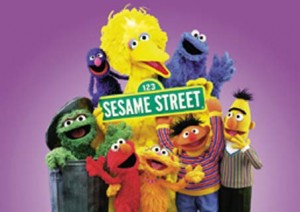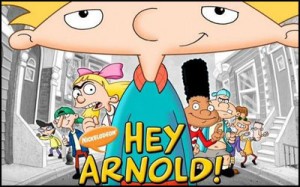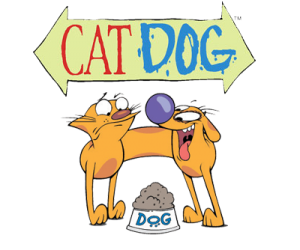Archive for February, 2010
Why Can’t We Gain “Moral Value” from the Big City?
Posted by kjohnson1585 in Film, Television, Uncategorized, Writing on February 17, 2010
Did You Hear About the Morgans? flopped across all three levels: commercially ($29 million domestic gross vs. a $58 million budget), critically (Metacritic: 27), and socially (Rotten Tomatoes: 13). Of the many things wrong with the film, it seems to be yet another work that espouses the evil, uncaring, cold, urban environment for the beauty, serene, and heartfelt warmth that can only be taken from the most rural of areas. City-folk can’t learn about real values in the hustle and bustle of that big, loud place with the skyscrapers and the traffic and the bums. No: you need to come out here, with the fresh air, the lack of civilization, and little cell phone service, where you’re freed from that boisterous nonsense and given the chance to understand you, your life and your significant other.
“Bullshit,” you say. “Why can’t films take the opposite approach? Why can’t characters move to the city and learn something about life values, movies such as –”
…
Wait. Has there ever even been a movie that done this? Has there been a film or TV show or comic or SOME entertainment medium that allowed the wonder and richness and excitement of the city to spur a character from the negative, overworked, self-centered mindset to the communal, wholesome, respectful one? (Farm-living isn’t exactly a cakewalk.) Can we learn value from the urban landscape? Has there been anyone willing to try?
Off the top of my head, only two films seem to touch partially upon the idea: Manhattan and Lost in Translation. Manhattan I have yet to see, but Woody Allen’s opus to New York is just simply that: it idolizes that specific city. It ignores cities in general, nor does it advocate the kind of generic values that rural areas seem to just impart in spades (see Annie Hall, in which its anti-LA sentiments are pretty glaring). Lost in Translation is closer, but it is not the city of Tokyo and its active culture through which Bill Murray has his transformation. His human revelations are brought about via his time with Scarlett Johansson, and he doesn’t learn about “values” so much as himself. It’s a character study, a fairly good one, but Tokyo, the city, is still inherently a backdrop of excess, noted by the earlier scenes of his longing gazes at the huge towers and bright lights. He didn’t go to Tokyo and, by extension, learn wholesome, gosh-darn-it lessons.
It’s easy to see why this trope-bordering-on-cliche is so prevalent in films today. From a technical and visual level, the city imparts a sense of lack of control, a frustrating milieu of frantic action that can’t adequately define or reflect the feeling of love, family, community, or friendship. What is the value of a kiss or a hug or a handshake, when horns and siren blare incessantly in background, across stone-cold swaths of grays? Any potential meaning there is rendered moot.
Surburbia used to be a breeding ground for such moral considerations, but since then, the 50s have been exposed as a hotbed of barely-hidden racism and sexism (see Mad Men), and dysfunction within the suburban family has been overly represented in films like Ed Wood, American Beauty, and The Weather Man. We could return to that locale to exercise clean and ethical living, but it would appear more like pastiche then genuine representation (see Blue Velvet).
This leaves rural America, with its wide open spaces and natural beauty, to be the venue in which such virtuous sensations arise. And while films have been produced that showcases the negative of expanse and freedom (Sling Blade, practically every horror movie ever), comedies, dramas, and even “dramedies” often pull their characters to these country scenarios to meditate on their state of mind, only to emerge a changed man or woman.
It would take a brave and visionary filmmaker to pool the right types of talents together to make a movie where the urban environment could be as rich and rewarding a place as a rural one. But it would be hard to do so. And expensive.
In retrospect, I can only think of two forms of entertainment that seem to suggest that the sprawling metropolis and the underlying streets have value, not only in the rich expanses of awe-inspiring architecture, but even in the meager conditions of street life, an area so often depicted with grim and filth, gangs and pimps, drugs and danger.
Oddly enough, they are children shows.
Sesame Street’s main formula — mildly straightforward and simple stories mixed with cartoons, skits, and segues about letters and numbers — has an underlying richness within itself, with characters that do indeed live and care and are generally helpful to each other. These are attitudes that are so often depicted in close-knit rural towns, where everyone knows everyone, so it’s great to finally see it in an area that could be Brooklyn or South Central LA. In my experience, the city is a lot more receptive to newcomers than the rural areas. The city is a constant hotbed of people coming and going, where strangers are a daily occurrence. Rural areas, while not outright distrustful, seem so keen on conforming the newcomer to their way of life — which of course, is undeniably right — than generally accepting the strangers’ ways of doing things. Just watch how Sesame Street deals with new puppets or locals. The introduction of Linda Bove, who brought the issue of deafness and sign language to the show, hosts ten times the significance than any camera shot of a quiet brook among trees.
Hey Arnold came, had a good run, and went; I personally think we missed a real opportunity by not adequately discussing the value of the urban youth this show quite accurately presented. While the main character, Arnold, was rather smaltzy for any child to be, the overall feel for the show was endearing. These were not the bratty, annoyingly precocious children that so often grace our Sleepless in Seattle’s and Jerry Maguire’s. These were real kids with real emotion issues, who struggled in schools named by number only, who played stickball and fooled around in the mud, who learned about themselves and their lot, not by escaping the urban landscape but by embracing it. When a character takes a city bus – public transportation! – and learns about the value of the people around her, that’s something real.
Neither of these shows contained a character from the country moving to the city and gaining a wholesome rebirth of the spirit (although I do think an episode of Hey Arnold did cover that). But what this does showcase is that places like New York, Los Angeles, Cleveland, Dallas, and, yes, even Detroit, can be rich with those moral instructions on life, love, and community that seem only regulated to areas that pits five miles of land between neighbors.
I don’t mean to harp on the rural communities, but films really need to start embracing the urban sprawl as containing those “values” that seem natural to rural or the occasional suburban world. Surely we can’t allow for PBS and Nickelodeon to be the only place that allow for such a viewpoint, one that uses the light-hearted, socially-interpreted media of puppetry and animation to appeal to kids, focusing on the values less as an artistic and narrative endeavor and more of a method to “educate” children. I would like the Jacksons, Roths, Tarantinos, Reitmans, and the many other directors, writers, and producers to look at the hustle and bustle of the asphalt jungle and, perhaps, find its own flow, its own community, its own wonder that can be passed along to audiences.
CLOSE REVEIW: CATDOG
Posted by kjohnson1585 in Television, Uncategorized, Writing on February 3, 2010
I apologize for the lack of updates, as I had to quickly get reacquainted with the East Coast time. I am working on two other columns, one for Damnlag, a brand new gaming website, and one for Wildsound, a film review website. [The latter is really hard to navigate, and there’s no general link to the specific articles I wrote. I did the ones for Freaks, Dracula, The Incredible Shrinking Man, The Fly, and other films that’s earlier than 1950.] I am also working on a comic AND putting together a pitch for a cartoon sitcom. Details about those two will come later.
CHILDHOOD REVISITED features will not be weekly, but more or less done on a “when I can” basis. This allows me to do other writeups without having to spend time watching a movie, something I have less and less time to do, until the summer at least. So, I will be providing more analysis of various cartoons, shows, and other entertainment elements that ought to be explored. Should be goooooooood.
First up – A Review of “take it or leave it” CatDog!
———————————
CATDOG
It could be argued to a certain extent that Nickelodeon’s CatDog triggered the onslaught of the more absurdist, surreal types of animation that now assaults the airwaves of Disney, Cartoon Network, and Nick itself. The departure from clearly defined character models and coherent settings allows far a larger pool of insane scenarios to pull from. This kind of variety doesn’t really exist beyond the classic shorts of the 50s, whose 4 minute escapades could occur anywhere.
CatDog was somewhat remarkably genius in its simple, odd premise. Prior to this cartoon, dogs and cats were pointedly DIFFERENT and constantly ENEMIES. Always. Cartoons cribbed from the canine’s propensity to chase felines as a universal sign of their natural animosity. Writers and animators chose sides and inevitably valued one over the other. Dog City. Road Rovers. Garfield. Heathcliff. Notice, too, the pack-group collectiveness of the dog-shows in comparison to the single-lead entity of the cat-shows. Dog lovers are SOCIAL! Cat lovers are INDEPENDENT! This is what IT MUST BE.
So for producers of CatDog to say “Well, let them be roommates” is relatively fresh in itself, but to either up the strangeness or justify the pairing, they had to be not only brothers, but… joined, exactly at the waist.
What we have here is an organic creature where one side is a dog and one side is a cat. The cat’s name is Cat. The dog’s name is Dog. Cat. Dog. CatDog.
Being joined at the waist must have been a NIGHTMARE for the animators. Luckily, following the laws of physics wasn’t necessary, but maintaining the lively movement between the co-joined siblings still seemed particularly nasty, even given the ability to stretch the torso as much as necessary. Their body was essentially a Slinky, their legs and arms interchangeable. But there were the shoes and the skates and the coats and the occasional pants, and the driving and the eating at a table and the fighting and the running and so on. How do you portray all that without looking, well, stupid? The answer? You can’t. But still, you gotta give them credit for trying.
The simplistic brilliance of actually pairing a dog and a cat is undermined by the on-the-nose names, but at least that would have been meta-comedic. Their personalities, however, became the primary issue, cribbed from both the consistent clichés of conflicting brothers AND the pre-conceived personification of canine and feline attitudes. Dog is playful, goofy, loves to fool around; Cat is serious, cultured, well-groomed. There was no subtlety to those personalities, which was perhaps the show’s main downfall (there was others, which will be addressed.)
I’m reminded of the Angry Beavers, which, prior before hitting its excellent stride of brilliant soul-music parodies, its speedy insanity, its comically, well-done side characters, and its uniquely defined characteristics, began as the inane pairing of one stupid brother fucking up while the other, smarter one exploited him and reaped the rewards. I suppose this personality clash can create a number of stories, but the formula is stale from the get-go: pick a setting, pick a conflict: dumb brother loses, smart brother wins.
AB improved leaps and bounds when it showed the willingness to not only put Dagget in the spotlight, but to put both of them in insane situations and watch them respond. Norbert’s superiority became arrogance and jealousy, which made him his own brand of stupid. Once Dagget and Norbert began getting smashed by trees an equal number of times, once the formula was destroyed, the show became a classic.
Unfortunately, CatDog consistently maintained the Cat-smart, Dog-dumb balance no matter what happened, which made the craziest, most unique and eccentric of plotlines come off stale. Dog would want, or do, something, Cat would grumble and sprout a sense of superiority, Dog would be sad. Then – BLAM – something happens that would make Dog appear right and Cat look dumb, Cat would apologize and they’d hug as family. This happened pretty much like clockwork, which was disappointing; CatDog reeked of tremendous potential.
Children aren’t stupid. They probably don’t think in terms of social interaction, but they understand the concept that, yeah, being two natural enemies joined at the waist must be fucking hard. You hate each other, and society hates your freakish nature. Somehow, you have to cope. CatDog could have been cleverer in that regard, but opted for the simpler stories and generic cartoon fare, which made the more surrealist elements of the settings seem more gimmicky than purposeful.
When they did make episodes that played to Cat and Dog’s strengths — when they did indeed have their transformative moments — they were more than often pretty good to excellent, but they came so far in between that it wasn’t worth the mundane tediousness of the regular show’s staple. Those strong episodes, more often than not, came against the show’s most frustrating set of character this side of the cast of Heroes.
The Greasers.

If you wore this shirt everyday forever, you'd still encounter The Greaser less than the 4 seasons of CatDog.
This trio of dogs and their mere existence to destroy CatDog went from nominally intriguing to downright, insultingly maddening. The Greasers, comprised of the gruff n’ buff leader, the high-squealing, short, female sidekick (who, of course, has a secret love interest for Dog), and their bumbling, moronic third member, spent every scene chasing CatDog for the sole intent of beating this piss out of them. The Greasers meant to represent the meanest of society’s constituents, whose obsession for purity invokes an unexplainable hatred for this mixed abomination. But as the episodes went by, and more of the Greaser’s exploits became more obvious, they were no longer that meaningful.
For one thing, it became clear that the Greaser’s hated Cat over Dog. While that’s understandable to a certain extent, it is essentially asinine without some sort of contrast. Where was the pro-Cat gang? Elevating the Greaser’s hatred towards CatDog to a direct, anti-Cat position skewed the entire show’s central premise. Why break down the cat vs. dog wall only to render it moot with a pro-Dog, anti-Cat antagonist? It would have been richer to keep The Greasers’ displeasure at the overall mix instead of the feline half.
At some point, though, the creators must have became aware of this, as the Greasers in time stopped being a gang of CatDog (emphasis on CAT) haters and instead became the show’s staple conflict catalyst. They became what the Red Man was on Cow And Chicken – CatDog’s consistent obstacle into whatever they needed to do. Climbing a mountain? The Greasers want to stop you! Going on a flight? Guess who’s running security! And so on.
This gave way to the other central problem to the show: TOO. MUCH. GREASERS. Between the second and third season, maybe two episodes had nothing to do with them. They were fucking everywhere, endlessly popping up and meddling in CatDog’s affairs, their lives going from a punk gang that messed with CatDog for kicks into a group whose SOLE existence depended on assaulting CatDog for their mere survival. If they didn’t at least throw one punch at CatDog, God would SMOTE them. This was made worse by the mere fact that CatDog already had their own Red Man – a green bunny character who played the role of anything that didn’t necessarily hate CatDog, but could cause problems all the same, just by being a jackass. With this character already causing enough issues, was the overabundance (over-dependence being more apt) of the Greasers really necessary?
Even as the show harped on its ultra-one-note direction, it perhaps had a bright moment with their TV-movie, which involved a ridiculous search for their parents. The twist being their parents were NOT a cat or dog couple, but two other species entirely, implying they were adopted. This certainly brought up a number of questions: where are the real parents? Were they abandoned? But such rich questions were never meant to be; the writers had no interest in pursuing this. Besides, the show was canceled after four seasons.
CatDog was a show that lacked the wherewithal and self-awareness to make something clever and interesting; instead being content to run through the gamut of generic siblings and overdone-to-the-point-of burnt Greaser plots. Its minor triumphs couldn’t overcome its overall blandness, and even with its surreal elements, it never brought them to any poignant use. Despite the potential for weird greatness, CatDog was as uninteresting as its name…. and its theme song.






